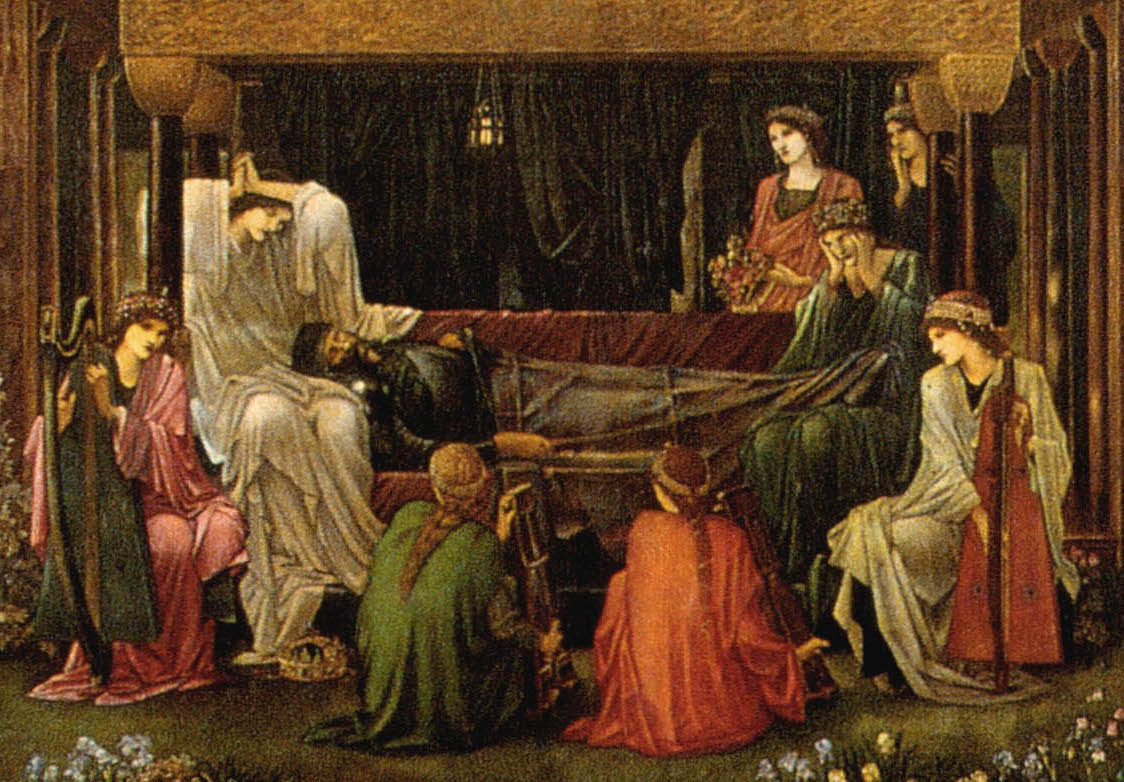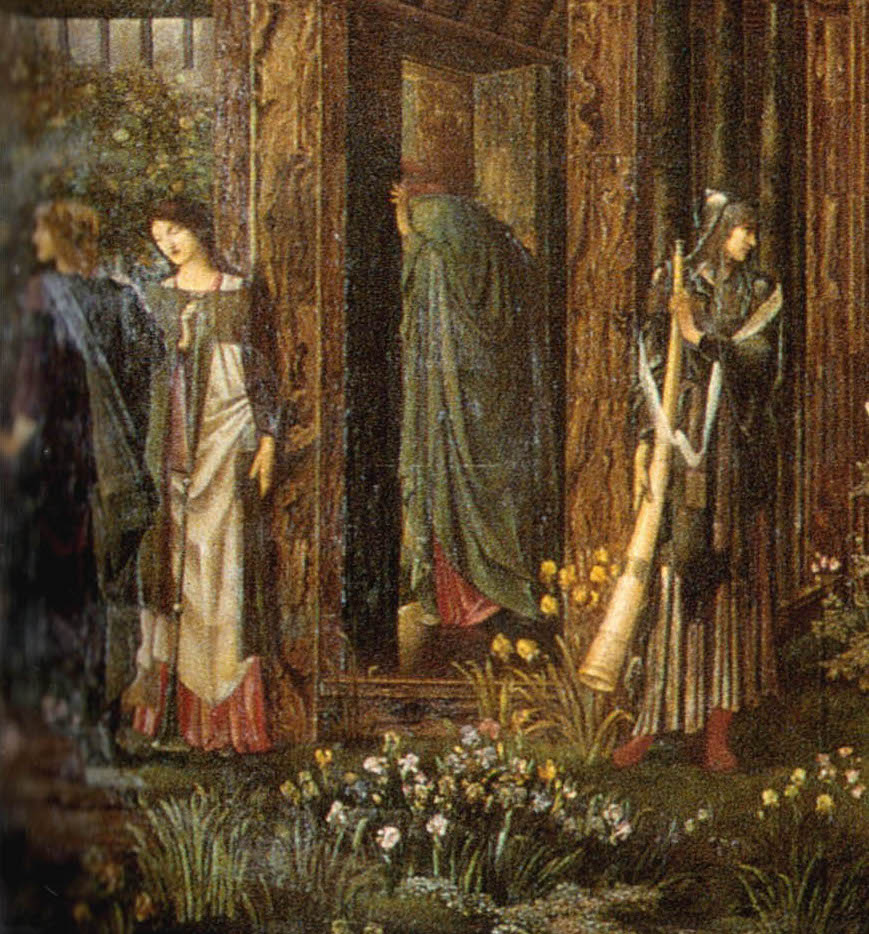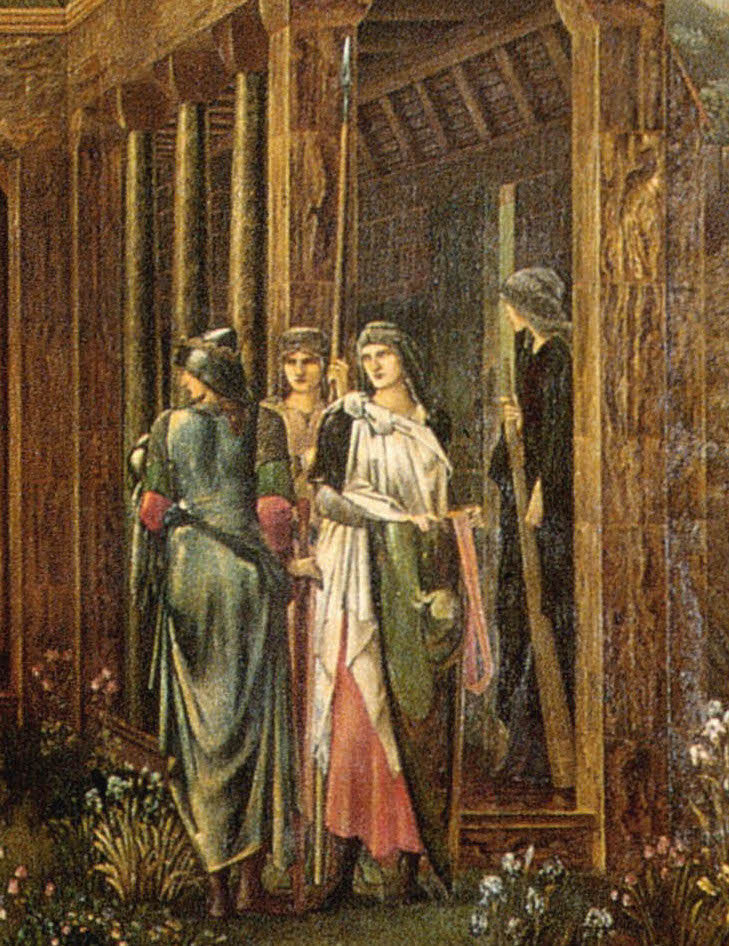
The Last Sleep of Arthur in Avalon, by Sir Edward Coley Burne-Jones (1833-1898). 1881-1898. Oil on canvas. Image permission and credit: Museo de Arte, Ponce, Puerto Rico - The Luis A. Ferre Foundation, Inc. (The museum kindly advises that the work is considered public domain under the Copyright law.) Image downloaded and caption and text added by Jacqueline Banerjee

Central group: King Arthur on the bier.
"The picture was at first intended for a particular space in the Library at Naworth Castle," writes Georgiana Burne-Jones, remembering her husband's long years of work on this last, panoramic Arthurian painting. She recalls that it "was meant to be very simply painted, but the idea of it lay deep in Edward’s mind and the scope of it grew until it ceased to suit its original purpose.... he regarded it as a task of love to which he put no limit of time or labour. It was far too large for the Grange studio, so he took a separate one for it in Campden Hill Road, where he used to work in such time as he could spare from other things. There it remained for nearly ten years; advancing slowly, but the thought of it constantly with him" (116).


Left: Closer view of the group to the left of the chief mourners. Right: Closer view of the group to the right of them..
Georgiana goes on to explain:
In the original scheme was a central picture of the sleeping King, and on each side another narrow one containing what he called “Hill Fairies” — the magical side of the story being thus insisted upon; also at one time he purposed that Arthur’s quiet resting-place should have a background of battle raging in the outer world, but afterwards this was changed, and only the suggestion of it is given in a figure watching at a door, and others looking out and listening to the tumult of the world, while some, with long trumpets in their hands, stand ready to blow up a blast that shall awake the King if need for him grows desperate. [116]
Link to Related Material
Bibliography
Burne-Jones, Georgiana. Memorials of Edward Burne-Jones, Vol. II. London: Macmillan, 1904. Internet Archive. Contributed by Brigham Young University. Web. 21 January 2024.
Created 28 October 2018